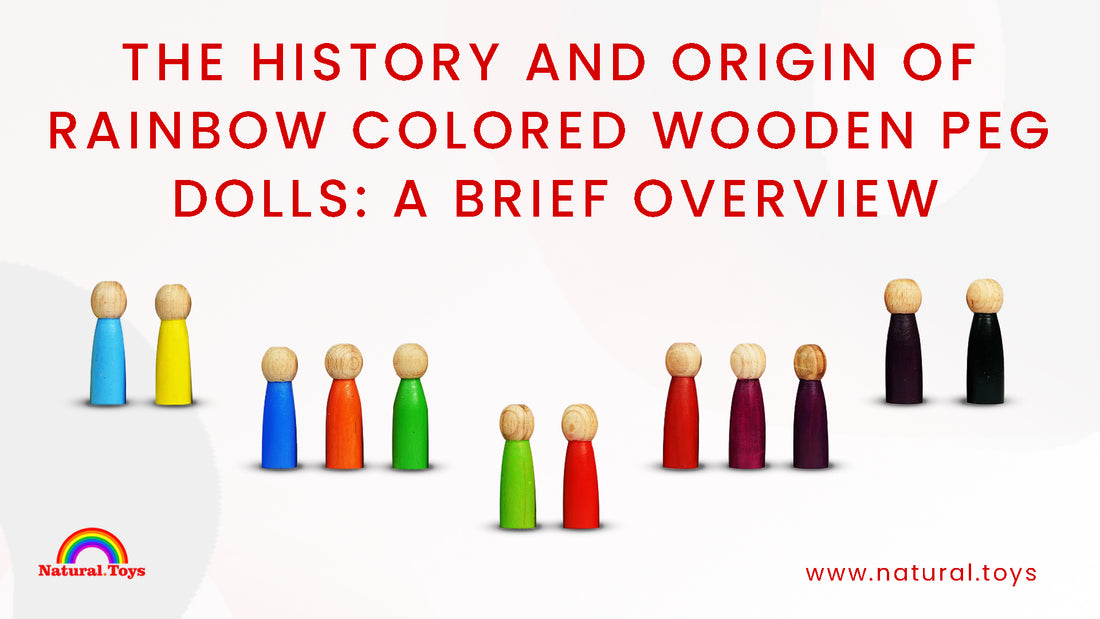
Rainbow-colored wooden peg dolls have become a popular children's toy in recent years, but their origins date back much further than many people realize. In this article, we'll take a brief look at the history and origin of these charming little dolls.
The history of peg dolls can be traced back to the 18th century, when wooden pegs were used as dolls by children in Germany. These dolls were typically made from simple wooden pegs with a rounded head and painted faces. They were often dressed in scraps of fabric and wool, and sometimes even had their own miniature furniture.
Over time, the design of peg dolls evolved to include more intricate details and decorations. In the 19th century, peg dolls became particularly popular in Russia, where they were often made from brightly painted wood and decorated with elaborate embroidery and beadwork.
The popularity of peg dolls continued to grow throughout Europe and North America in the early 20th century. In the United States, the dolls were often made by children themselves, using scraps of cloth, yarn, and other materials. These homemade peg dolls were particularly popular during the Great Depression, when families were forced to make do with what they had.
In the mid-20th century, peg dolls fell out of fashion as more modern toys, such as Barbie dolls and action figures, became popular. However, in recent years, there has been a renewed interest in traditional toys and crafts, and peg dolls have once again become popular among children and adults alike.
The rainbow-colored wooden peg dolls that we know today are a relatively recent invention. The first rainbow peg dolls were created by a German company called Grimm's Spiel und Holz Design in the early 2000s. These dolls were made from sustainably sourced wood and painted in bright, cheerful colors using non-toxic paint.
Since then, rainbow-colored wooden peg dolls have become a popular choice for parents and educators looking for eco-friendly and sustainable toys. The dolls are often used in Waldorf and Montessori educational settings, where they are used to encourage imaginative play and creativity.
One of the reasons that rainbow-colored wooden peg dolls have become so popular is their simplicity. Unlike many modern toys, they don't require batteries or screens to keep children entertained. Instead, they encourage imaginative play and can be used in a wide variety of ways. Children can use them to act out scenes from their favorite stories, create their own mini-worlds, or simply enjoy the tactile experience of playing with a wooden toy.
In addition to being a popular toy, rainbow-colored wooden peg dolls have also become a symbol of inclusivity and diversity. The dolls come in a range of skin tones, hair colors, and clothing styles, making them accessible to children of all backgrounds.
In conclusion, the history and origin of rainbow-colored wooden peg dolls is a fascinating story that spans centuries and continents. From their humble beginnings as simple wooden pegs in Germany to their modern incarnation as a popular eco-friendly toy, peg dolls have captured the hearts and imaginations of children and adults alike. Whether used for play or as a symbol of inclusivity, these charming little dolls are sure to remain a beloved part of our cultural heritage for many years to come.

